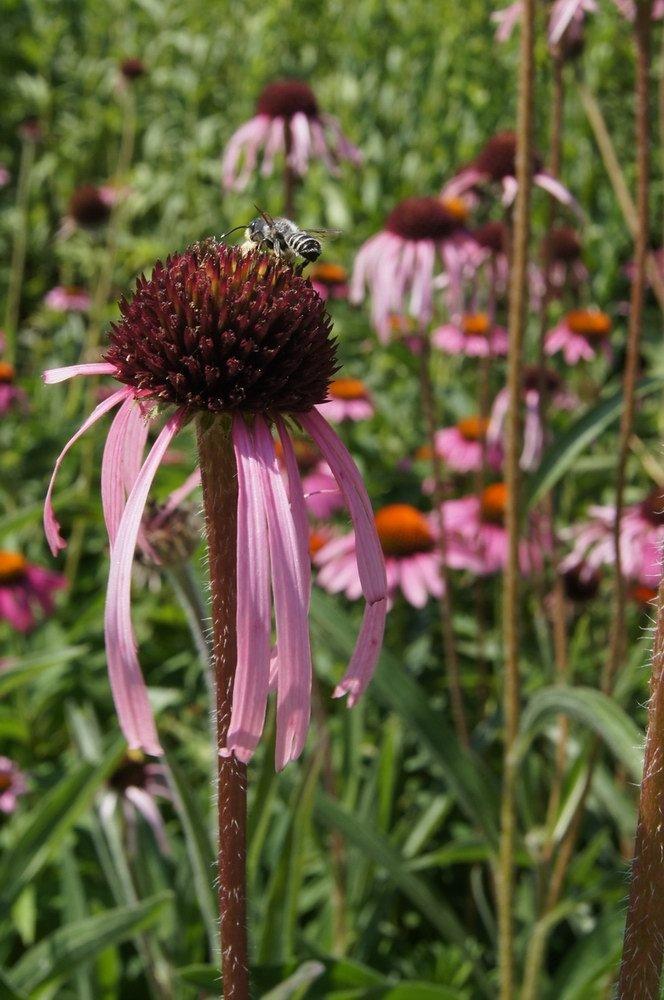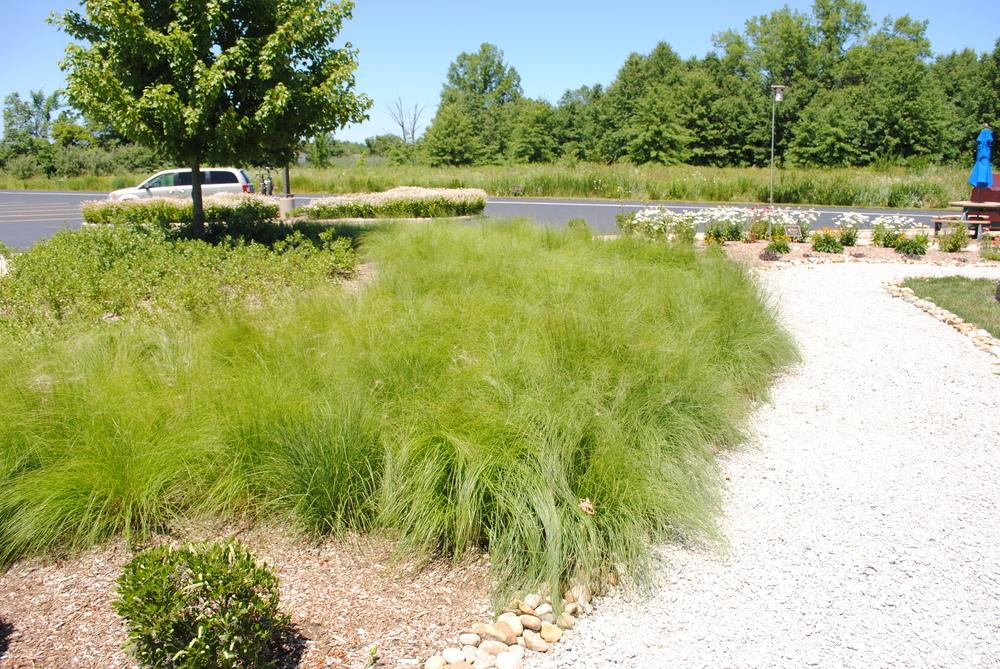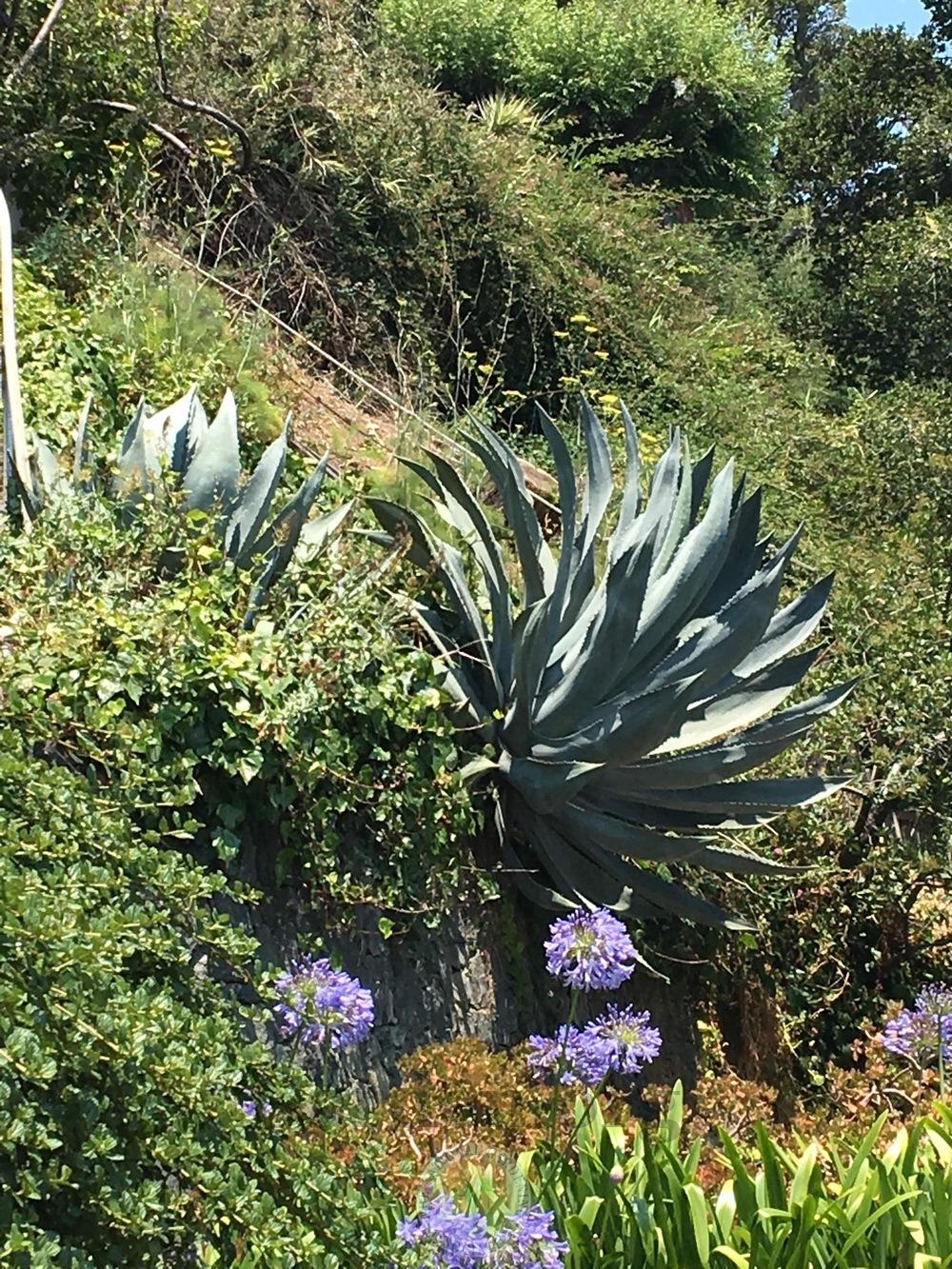Global climate change is creating unpredictable weather patterns across the globe, including extreme heat and periods of extended drought, even in the spring; when many parts of the country are normally getting ample rainfall. To combat this growing concern, we need to be aware and mindful of creating gardens that are resilient and “tough” in these dry conditions, and that require minimal watering or rainfall.
Another relative to the Silphiums are the coneflowers, Echinacea. Perhaps no other prairie plants have exhibited such fanfare as this genus. There has been amazing hybridizing and selection of the purple coneflower, Echinacea purpurea in particular. Both the Chicago Botanic Garden and the Mt. Cuba Center in Delaware have conducted trials of the purple coneflowers which are noted for the raised dark brown central seed head and radiating purple petals. ‘Pica Bella’ is one with pink-purple flowers, while both ‘Fragrant Angel’ and ‘Snow Cone’ have white flowers. Echinacea pallida has long stems with very reflexed pale pink petals that create a very architectural effect in the garden. The Tennessee coneflower, Echinacea tennesseensis has more stout petals that create a pinwheel-like effect in the garden. All the coneflowers are also great seed sources for seed-eating birds like the American Gold Finch, the Purple Finch, and a whole host of native sparrows.


While Cacti are an iconic plant of the Southwest and are seen in amazing collections at gardens like the Huntington Botanical Garden or the Ruth Bancroft Garden, Cacti can grow in many climates throughout the United States. There are many species of Cacti, i. e., Opuntia and Cylindropuntia, and more, that are native to high elevations of Colorado, Wyoming, Idaho, Utah, etc. that are perfectly hardy and can grow quite well in many of the Midwestern states and the East Coast.
Additionally, the prickly pear, Opuntia humifusa is found natively in almost every state East of the Mississippi River. This spreading cactus has beautiful yellow flowers and can be grown in gravel, sand, and other well-drained soils. Another versatile group of the dry garden are the yuccas. The Adam’s needle, Yucca filamentosa has a base of sharp, upright, evergreen leaves. It is native and is found growing in natural habitats throughout all the southeastern U. S. but is exceptionally winter hardy in many other states. It sends up dramatic spikes of flowers in mid-summer that are covered in pendant, bell-shaped, creamy white flowers. The flowering stalks can reach eight to ten feet tall. ‘Color Guard’ is a selection with striated yellow and green leaves that is very good for winter interest.Also, for great effect and stature in the xeriscape, there are dozens of species and cultivars of Agave. Agave americana has striking steel-blue leaves with amazing flower stalks that reach over 25 feet tall and are covered in clumps of tubular yellow flowers that can attract a myriad of hummingbird species depending on where it is grown in the country. Hardy in Zone 8, Agave americana is best for the southern and western parts of the U. S.
 Andrew Bunting is Vice President of Horticulture at The Pennsylvania Horticultural Society and leads the utilization of planting and design to promote environmentally sound gardening practices at PHS. Andrew has worked at the Chicago Botanic Garden, Chanticleer Garden, and the Scott Arboretum for a tenure of 27 years. He has received the American Public Gardens Association's Professional Citation, Chanticleer Scholarship in Professional Development, and the Certificate of Merit from the Pennsylvania Horticultural Society. He also serves on the Board of Magnolia Society International. Andrew published his first book in 2015, "The Plant Lover's Guide to Magnolias".
To learn more about The Pennsylvania Horticultural Society, please visit PHSOnline.org.
Andrew Bunting is Vice President of Horticulture at The Pennsylvania Horticultural Society and leads the utilization of planting and design to promote environmentally sound gardening practices at PHS. Andrew has worked at the Chicago Botanic Garden, Chanticleer Garden, and the Scott Arboretum for a tenure of 27 years. He has received the American Public Gardens Association's Professional Citation, Chanticleer Scholarship in Professional Development, and the Certificate of Merit from the Pennsylvania Horticultural Society. He also serves on the Board of Magnolia Society International. Andrew published his first book in 2015, "The Plant Lover's Guide to Magnolias".
To learn more about The Pennsylvania Horticultural Society, please visit PHSOnline.org.